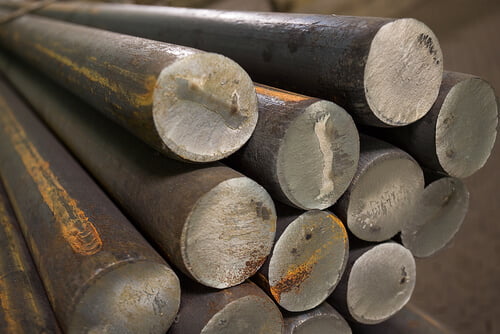Steel is a ubiquitous material used in various industries, and one particular type, 1018 steel, stands out for its distinctive properties and applications. Understanding its composition, advantages, limitations, and diverse uses is essential. Here are the key points to know about 1018 steel.
Introduction to 1018 Steel

1018 steel belongs to the low-carbon steel family, characterized by its excellent weldability and machinability. It contains around 0.18% carbon and small amounts of other elements, contributing to its unique attributes.
Composition and Properties
Chemical Makeup
The composition primarily includes iron, carbon, manganese, phosphorus, and sulfur, ensuring a balance of strength and workability. Its low carbon content enhances its weldability, making it ideal for various fabrication processes.
Mechanical Properties
Known for its exceptional toughness and ductility, 1018 steel exhibits moderate strength, making it suitable for a wide range of applications. Its mechanical properties make it easy to machine and form into desired shapes.
| Element | Composition (%) | Properties |
|---|---|---|
| Iron (Fe) | Balance | High tensile strength, ductility |
| Carbon (C) | 0.15 – 0.20 | Enhances hardness and strength |
| Manganese (Mn) | 0.60 – 0.90 | Improves hardenability and strength |
| Phosphorus (P) | 0.04 (max) | Can reduce ductility in high concentrations |
| Sulfur (S) | 0.05 (max) | Impurities affect machinability |
Properties
- Tensile Strength: High tensile strength, suitable for structural applications.
- Ductility: Allows for easy forming and shaping without compromising strength.
- Hardness: Moderate hardness due to its carbon content.
- Machinability: Excellent machinability, making it suitable for various fabrication processes.
- Weldability: Good weldability, although precautions are necessary during welding to avoid cracking.
This table summarizes the key elements present in 1018 Steel along with their compositions and resultant properties.
Common Uses
Manufacturing Applications
Industries such as automotive, construction, and machinery extensively utilize 1018 steel in manufacturing components like gears, bolts, and shafts due to its reliability and affordability.
Industrial Uses
In structural engineering and general fabrication, 1018 steel finds applications in constructing frames, braces, and other structural elements due to its strength and ease of manipulation.
Advantages of 1018 Steel
Strengths
Its combination of strength and machinability makes 1018 steel a preferred choice for intricate parts and components, reducing production costs without compromising quality.
Versatility
The adaptability of 1018 steel in various fabrication processes, along with its consistent performance, offers versatility for different industrial needs.
Limitations and Considerations
Welding Challenges
While highly weldable, precautions are necessary due to potential issues like the risk of cracks during welding. Proper techniques are crucial to ensuring structural integrity.
Corrosion Resistance
1018 steel lacks significant resistance to corrosion compared to stainless steel, demanding appropriate measures for protection in corrosive environments.
Comparison with Other Steels
Contrasting Properties
Comparing 1018 steel with higher carbon steels highlights its lower hardness but increased ductility, offering unique advantages in specific applications.
Applications Comparison
Its characteristics make it a viable alternative to more expensive steels in various industries where corrosion resistance is not the primary concern.
Maintenance and Care Tips

Preventive Measures
Applying protective coatings and regular inspections can significantly enhance 1018 steel’s durability and lifespan, especially in corrosive environments.
Preservation Techniques
Proper storage and maintenance, including oiling and avoiding prolonged exposure to moisture, help prevent rusting and degradation.
Market Availability and Variants
Grades and Forms
1018 steel is available in different grades and forms, such as bars, rods, and sheets, catering to diverse industrial requirements.
Market Trends
Its cost-effectiveness and reliable performance continue to drive demand, with innovations in processing techniques leading to more variants and applications.
Future Prospects
Innovations and Developments
Ongoing research aims to improve 1018 steel’s properties further, exploring modifications to enhance its corrosion resistance without compromising its favorable characteristics.
Potential Changes
Technological advancements might lead to the development of newer variants with enhanced properties, potentially expanding its applications in various industries.
Conclusion
1018 steel remains a crucial material in numerous industries due to its balanced properties, affordability, and ease of use. Understanding its characteristics, applications, and maintenance can help maximize its benefits while addressing its limitations.
FAQs
- Is 1018 steel suitable for outdoor applications?
While it lacks significant corrosion resistance, proper coatings and maintenance can make it viable for outdoor use in certain conditions. - Can 1018 steel be hardened?
It is not typically considered a hardenable steel due to its low carbon content, but some surface-hardening methods can be applied. - What are the machining characteristics of 1018 steel?
Its excellent machinability allows for easy cutting, drilling, and shaping, making it popular in manufacturing processes. - How does 1018 steel compare to stainless steel?
While stainless steel offers superior corrosion resistance, 1018 steel provides cost-effective solutions in applications where corrosion is not a primary concern. - Are there specific industries where 1018 steel is predominantly used?
Yes, industries like automotive, construction, and general manufacturing heavily rely on 1018 steel for its versatile properties and affordability.


